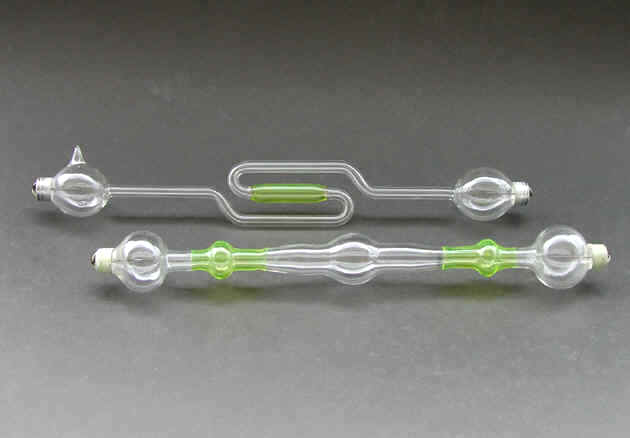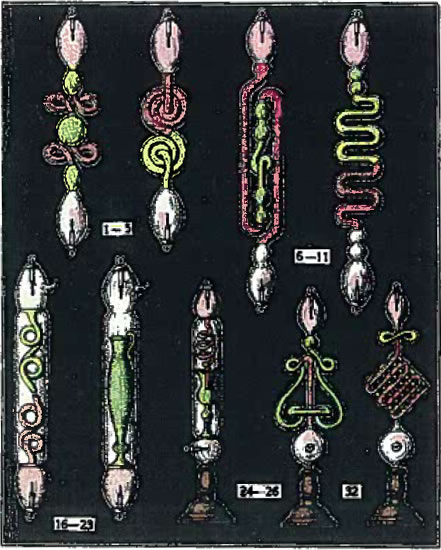Geissler Tubes (early 1900s)

The two examples shown here are relatively small and simple versions of the device invented by Heinrich Geissler in the mid-1850s. Known as Geissler tubes, these are the forerunners of modern neon and fluorescent tubes.
Each partially evacuated tube has an electrode at each end. When a high voltage is applied across these electrodes, the tube emits light of a color that depends on the type of gas in the tube.
They were originally used for the spectroscopic analysis of gases, but they also served as curiosities for entertainment purposes. Although they played no role in the discovery of X-rays, some of the techniques developed for their production were used to construct X-ray tubes.
The yellow sections of these tubes are made of uranium glass.
Size: Approximately 9" long with a one-bulb diameter
The following figure from the 1914 catalog of the Otto Pressler company shows much prettier examples.

